N-BENZYLPHTHALIMIDE
- CAS NO.:2142-01-0
- Empirical Formula: C15H11NO2
- Molecular Weight: 237.25
- MDL number: MFCD00023077
- EINECS: 218-395-5
- SAFETY DATA SHEET (SDS)
- Update Date: 2023-05-04 17:34:35
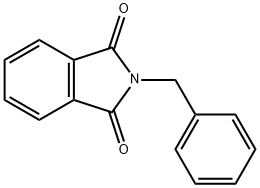
What is N-BENZYLPHTHALIMIDE?
Chemical properties
white crystalline powder
The Uses of N-BENZYLPHTHALIMIDE
N-Benzylphthalimide may be used in the following syntheses:
- 2-benzyl-1,1,3,3-tetraphenylisoindoline
- tailor-made highly fluorous porphyrin derivatives
- N-benzylisoindole
What are the applications of Application
N-Benzylphthalimide is an N-substituted phthalimide
Preparation
In a flask equipped with a reflux condenser, a mixture of 300 gm (2.04 mole) of phthalimide, 140 gm (1.09 mole) of potassium carbonate, and 300 gm (2.37 mole) of benzyl chloride is refluxed for 3 hr. The excess benzyl chloride is removed by steam distillation and the benzyl phthalimide which crystallizes out is filtered by suction. The product is washed with water, with 400 ml of 60% ethanol, and then dried to afford 360-375 gm (74-77%), m.p. 116°C (recrystallized from acetic acid).
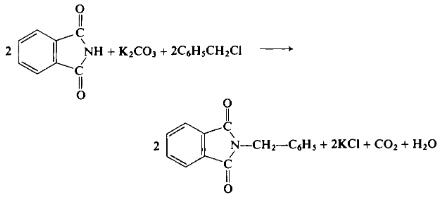
Definition
ChEBI: N-Benzylphthalimide is a member of isoindoles.
Synthesis Reference(s)
Organic Syntheses, Coll. Vol. 2, p. 83, 1943
The Journal of Organic Chemistry, 47, p. 2785, 1982 DOI: 10.1021/jo00135a021
Tetrahedron Letters, 11, p. 2691, 1970
General Description
N-Benzylphthalimide (NBPT), also known as 2-benzylisoindoline-1,3-dione, is an N-substituted phthalimide. It has been prepared by reacting phthalic anhydride with benzyl amine in glacial acetic acid. Vibrational spectra of NBPT has been recorded and assigned. NBPT is a roof-shaped molecule with a planar cyclic imide and a phenyl ring connected by a methylene group. Crystal structure of N-benzylphthalimide has parallel layers of phthalimides stack along the a axis.
Properties of N-BENZYLPHTHALIMIDE
| Melting point: | 114-116 °C(lit.) |
| Boiling point: | 379.79°C (rough estimate) |
| Density | 1.3430 |
| refractive index | 1.5500 (estimate) |
| storage temp. | Sealed in dry,Room Temperature |
| pka | -2.12±0.20(Predicted) |
| form | powder to crystal |
| color | White to Light yellow |
| CAS DataBase Reference | 2142-01-0(CAS DataBase Reference) |
Safety information for N-BENZYLPHTHALIMIDE
| Signal word | Warning |
| Pictogram(s) |
 Exclamation Mark Irritant GHS07 |
| GHS Hazard Statements |
H302:Acute toxicity,oral |
| Precautionary Statement Codes |
P280:Wear protective gloves/protective clothing/eye protection/face protection. P305+P351+P338:IF IN EYES: Rinse cautiously with water for several minutes. Remove contact lenses, if present and easy to do. Continuerinsing. |
Computed Descriptors for N-BENZYLPHTHALIMIDE
New Products
4-Fluorophenylacetic acid 4-Methylphenylacetic acid N-Boc-D-alaninol N-BOC-D/L-ALANINOL Tert-butyl bis(2-chloroethyl)carbamate 3-Morpholino-1-(4-nitrophenyl)-5,6-dihydropyridin- 2(1H)-one Furan-2,5-Dicarboxylic Acid Tropic acid S-2-CHLORO PROPIONIC ACID ETHYL ISOCYANOACETATE 2-Bromo-1,3-Bis(Dimethylamino)Trimethinium Hexafluorophosphate (6-METHYL-[1,3]DITHIOLO[4,5-b]QUINOXALIN-2-ONE INDAZOLE-3-CARBOXYLIC ACID 4-IODO BENZOIC ACID (2-Hydroxyphenyl)acetonitrile 4-Bromopyrazole 5,6-Dimethoxyindanone 2-(Cyanocyclohexyl)acetic acid 4-methoxy-3,5-dinitropyridine 2-aminopropyl benzoate hydrochloride 1-(4-(aminomethyl)benzyl)urea hydrochloride diethyl 2-(2-((tertbutoxycarbonyl)amino) ethyl)malonate tert-butyl 4- (ureidomethyl)benzylcarbamate Ethyl-2-chloro((4-methoxyphenyl)hydrazono)acetateRelated products of tetrahydrofuran
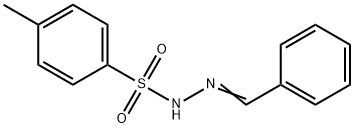
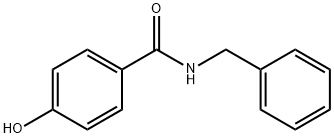
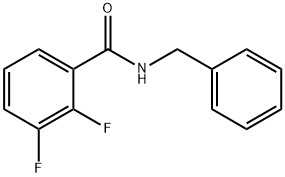


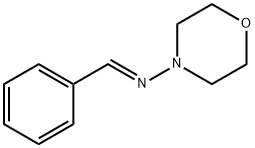
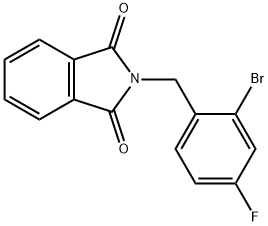

You may like
-
 N-Benzylphthalimide CAS 2142-01-0View Details
N-Benzylphthalimide CAS 2142-01-0View Details
2142-01-0 -
 N-Benzylphthalimide 98% CAS 2142-01-0View Details
N-Benzylphthalimide 98% CAS 2142-01-0View Details
2142-01-0 -
 1975-50-4 98%View Details
1975-50-4 98%View Details
1975-50-4 -
 2-HYDROXY BENZYL ALCOHOL 98%View Details
2-HYDROXY BENZYL ALCOHOL 98%View Details
90-01-7 -
 2-Chloro-1,3-Bis(Dimethylamino)Trimethinium Hexafluorophosphate 221615-75-4 98%View Details
2-Chloro-1,3-Bis(Dimethylamino)Trimethinium Hexafluorophosphate 221615-75-4 98%View Details
221615-75-4 -
 61397-56-6 CIS BROMO BENZOATE 98%View Details
61397-56-6 CIS BROMO BENZOATE 98%View Details
61397-56-6 -
 14714-50-2 (2-Hydroxyphenyl)acetonitrile 98+View Details
14714-50-2 (2-Hydroxyphenyl)acetonitrile 98+View Details
14714-50-2 -
 118753-70-1 98+View Details
118753-70-1 98+View Details
118753-70-1